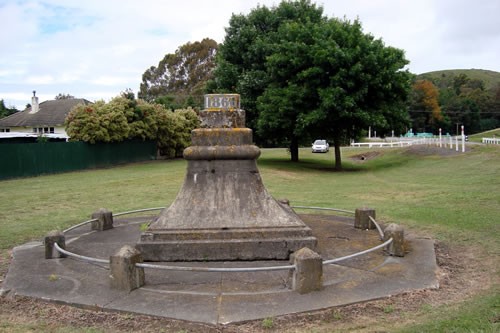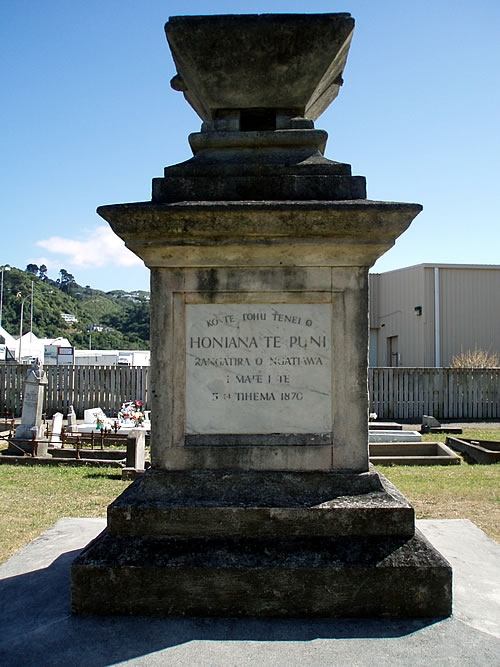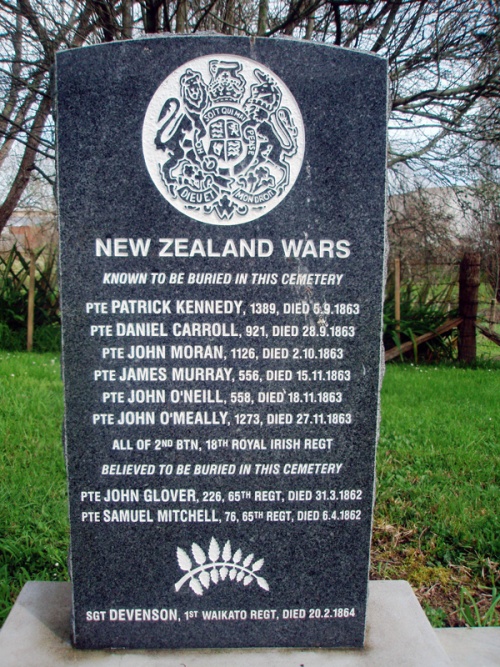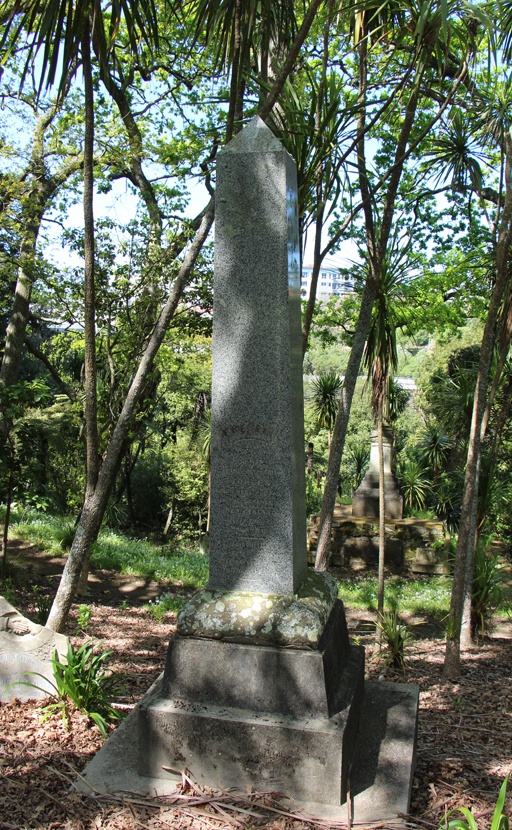
This memorial stands in front of Te Kotahitanga Hall – also known as Unity Hall – on Ngatirangi Street (SH2) in Nūhaka, a small settlement on the east coast of the North Island. Nūhaka is north-east of the Māhia Peninsula on State Highway 2, about 30 km east of Wairoa and 70 km south of Gisborne.
The memorial was erected by the New Zealand government to acknowledge the allegiance of Ihaka Whaanga (died 1875) to the Crown.
Whaanga was a leader of the Ngāti Rākaipaaka hapu of Ngāti Kahungunu, based at Māhia and Nūhaka. He strongly opposed Pai Mārire – Hauhau – activity in Hawke’s Bay in the mid-1860s and actively supported the government against Te Kooti Rikirangi of Rongowhakaata between 1868 and 1872.
Ihaka Whaanga led contingents of Ngāti Kahungunu in a number of military campaigns. After helping to drive Wairoa Hauhau from Omaru-hakeke pā (Marumaru) in the Wairoa valley on Christmas Day 1865, he and Kopu Parapara pushed on towards Waikaremoana. Ambushed and under heavy fire, the ‘fearless’ Whaanga was wounded twice while rallying his people at Te Kopane on 13 January 1866.
Nine months later, Whaanga was among Ngāti Kahungunu leaders who joined Colonel George Whitmore’s militia in driving Hauhau forces out of Ōmarunui pā near Napier. On the morning of 12 October 1866 he distinguished himself in action.
Whaanga was one of the leaders of the Hawke’s Bay contingent that went to Poverty Bay after Te Kooti’s attack in November 1868. The ‘staunch old chief’ led his people in pursuit of Te Kooti, first to Makaretu and then to Ngatapa, where he joined Rāpata Wahawaha’s Ngāti Porou in the first attack on the pā on 5 December 1868.
In April 1869, Whaanga led the Wairoa force that reinforced the defenders of Hiruhārama (Jerusalem) pā, near the mouth of the Mōhaka River, when it was besieged by Te Kooti. He was one of the leaders of the kūpapa (Māori fighting alongside the government) who were presented with swords of honour in 1872 in acknowledgement of their services.
Ihaka Whaanga died at Māhia on 14 December 1875 and was buried on a hill at the southern tip of the peninsula. This memorial appears to have been erected at the initiative of the land purchase officer, magistrate and politician Samuel Locke. The historian Thomas Lambert believed that it originally stood at Māhia on the spot where Whaanga’s father Te Rataau had been killed in the early 19th century. On 4 August 1915 the Poverty Bay Herald reported that Native Land Court Judge Robert Jones had that day unveiled a memorial stone ‘re-erected at Nuhaka’ to the late chief.
The Herald also reported that a resolution was passed at Nūhaka ‘to do honor to the memory of the dead chief, here, beside his tomb’. However, no other evidence that Whaanga was reinterred at Nūhaka has as yet been discovered.
Additional images
Inscription
He tohu aroha / mo / Ihaka Whanga / He rangatira no / Ngatikahungunu / He hoa piri tonu ki te / Pakeha He Kai hapai / I te Ture / I mate ki Te Mahia / Tihema 14, 1875 / Na te Kawanatanga tenei tohu / I Whakatu.
In Memory / of / Ihaka Whanga. / A Chief of the / Ngatikahungunu Tribe. / A firm friend of / Europeans / and supporter of the / Queen’s Laws / Died at Mahia / Hawkes Bay. / 14th December 1875. / This Monument is Erected / by the Government.
See also: image of the memorial from the 1880s (Timeframes). At this time the monument was topped by a classical figure that has since been removed.
Further information
- ‘Resolution of the Maoris’, Poverty Bay Herald, 4 August 1915
- Angela Ballara, ‘Whaanga, Ihaka - Biography’, in Dictionary of New Zealand Biography. Te Ara - the Encyclopedia of New Zealand, updated 1 September 2010
- James Cowan, ‘The First Wairoa Campaign’, ‘The Fight at Omarunui’, ‘First Engagements with Te Kooti’, ‘The Siege of Ngatapa’, and 'Te Kooti’s Attack on Mohaka’, in The New Zealand Wars: a history of the Maori campaigns and the pioneering period: volume II: The Hauhau Wars, 1864–72, R.E. Owen, Wellington, 1956, pp. 129–35, 137–42, 235–43, 270–6, 327–35
- Thomas Lambert, The story of old Wairoa and the East Coast district, North Island New Zealand, Coulls, Somerville, Wilkie, Dunedin, 1925 (reprinted with index by Reed, Auckland, 1998), esp. pp. 348–9, 562, and photo facing p. 697
Credit:
Images: Andy Palmer, 2011 and Margaret Marks, 2009
Text: Karen Cameron with David Green
This memorial stands in front of Te Kotahitanga Hall in Nūhaka. It was erected by the New Zealand government to acknowledge the allegiance of Ihaka Whaanga (died 1875) to the Crown.




 Reddit
Reddit Twitter
Twitter Facebook
Facebook Google
Google StumbleUpon
StumbleUpon
























































































































